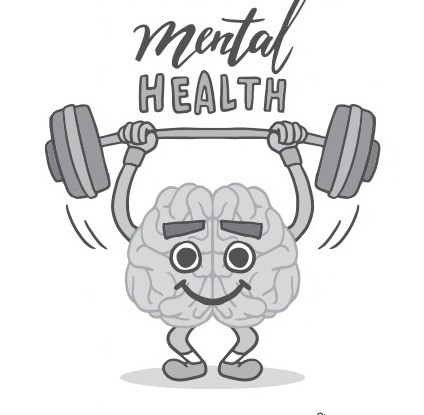
In countries across the globe, including the United States, anxiety and depression have reached peak heights that previously have not been seen. There are a variety of contributing factors that go along with “modern life,” such as social isolation, poor diets, and a focus on money and image. One key factor that’s often overlooked is physical inactivity.
Physical activity, such as taking a walk or a trip to the gym, can temporarily improve our mood. Exercise stimulates the body to produce endorphins and enkephalins, the body’s natural feelgood hormones. Beyond a temporary mood boost, recent studies strongly suggest that physical exercise is necessary for the maintenance of good mental health, and can even be used to treat chronic mental illness. Exercise reduces the likelihood of depression and also maintains mental health as we age. On the treatment side, exercise appears to be as effective as existing medications across a range of conditions, such as mild to moderate depression, dementia, anxiety, and it even reduces cognitive issues in schizophrenia.
In Western society there’s often a strong distinction made between “mind” and “body” that implies mental and physical health can be separated, but that’s simply not the case. Exercise directly affects the brain. Regular physical exercise increases the volume of certain brain regions, partly because of increased oxygen and nutrient delivery to the brain, and partly because of an increase in other factors that support neuron signaling, growth, and connections.
So what amount and types of exercises are required in order to see such benefits? One study has shown that exercising at least three times a week for 45 to 60 minutes each session successfully helped treat chronic depression. The type of exercise made no difference, whether it was resistance training or aerobic.
The effects usually take about four weeks to be noticed, and interestingly enough, this is also how long the process of neurogenesis takes. For the greatest effect, training should continue for 10 to 12 weeks. This may seem like a lot of exercise given today’s “quick fix” mentality, or even intimidating, but no doubt you’ll agree the benefits are well worth the effort. Even if you do less than the recommended amounts of exercise, you’ll still experience many worthwhile benefits.
At the COA’s Fitness Centers, we strive to make fitness accessible and enjoyable for all. During the coronavirus shutdown, you can follow us on Facebook at www.facebook.com/CassCOA/ and we'll be posting some videos there and on our website. Once the shutdown is lifted, come check us out at either the Cassopolis or Dowagiac location and let us help you to get motivated with a fitness routine or with a class. We would be more than happy to work with and help you attain a healthier mind and body.




